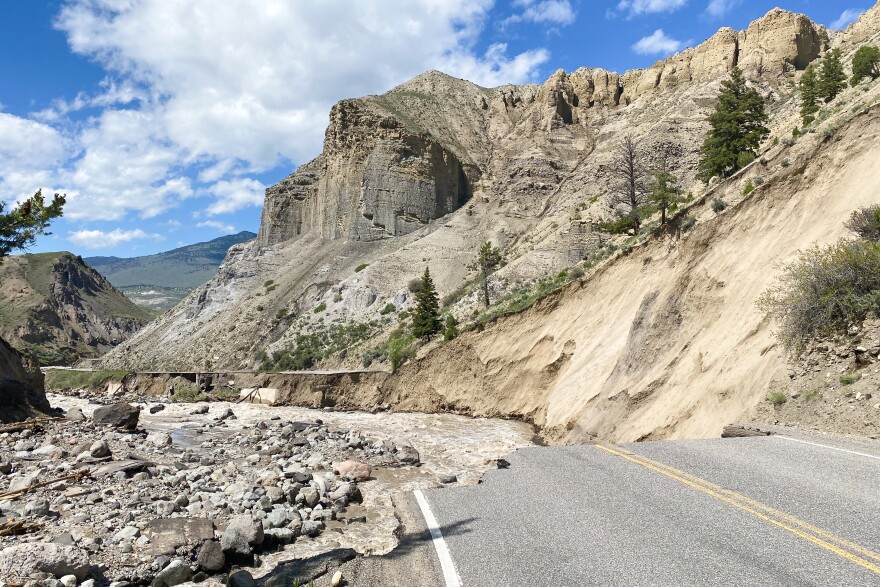A once in 500-year flood event devastated Yellowstone National Park one-year ago. Researchers have since studied the damage, hoping to learn lessons for the future.
On the morning of June 13, 2022, Yellowstone completely shut down. Record levels of water swept through the park – destroying roads, bridges, buildings and even infrastructure in gateway towns, like Gardiner, Mont.
Shortly after, a group of researchers from the National Science Foundation’s Geotechnical Extreme Events Reconnaissance (GEER) team arrived at the scene. The group shows up on the scene of disasters to collect data before it disappears.
“People need to repair the bridge, or at least they need to do repair so they can get to the grocery store, they can get to the hospital,” said Bret Lingwall, GEER researchers and associate professor at South Dakota Mines. “So we have to get out there quickly before a lot of the good information is covered up by repairs.”
Lingwall said there were three big takeaways from their research that are relevant nationally. One being rethinking building codes in communities.
“The famous 100-year flood exceedance probability criteria for design is probably insufficient for the way our communities are constructed, and how they actually operate and that higher standards are likely required due to the increasing what we call, ‘fragility of our communities,’” Lingwall said.
Lingwall said another takeaway was improving infrastructure, like planning location of roadways and constructing bridges higher above rivers. Lastly, community resiliency – Lingwall said he has never seen as tough of communities as he did in Wyoming and Montana.
“They got their farm equipment, and they rebuilt the approaches before the DOT (Department of Transportation) could get out there and do it for them. Why? Because they can do it, and they know how to do it,” Lingwall said.
He said he hopes this data can be used to prevent damage in other places prone to natural disasters. One area he highlighted is the Black Hills, where he said massive future flooding is actually likely.
“We know from paleo flood data that the Black Hills are capable of producing just massive floods that can carry boulders the size of Volkswagen's miles and miles and miles out onto the flats,” Lingwall said.
He added that any community built in a mountainous ravine alongside rivers and creeks should be planning ahead for potential flooding in the future.







